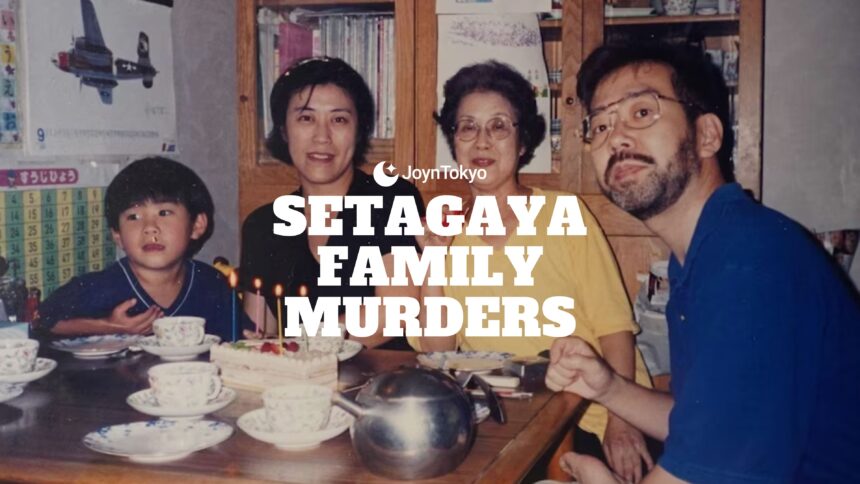As anyone who has lived in, visited, or perhaps even knows vaguely about Japan can tell you: this country is famous for its low crime rate, with violent crime — and especially homicides — being incredibly rare. However, those familiar can also tell you that occasionally, some murders are so serious that they don’t just make the news: they impact the national psyche.
The Setagaya Family Murders are one such case. Arguably the most notorious unsolved murder case in the history of Japan, this case is still, decades later, an open investigation into a grisly set of killings, and even resulted in one of the most crucial changes in law in Japanese history.
Be aware, this article describes a violent crime, including crimes perpetrated against children. If such a story would upset you, I would recommend that you end your perusal of this article here.
Background
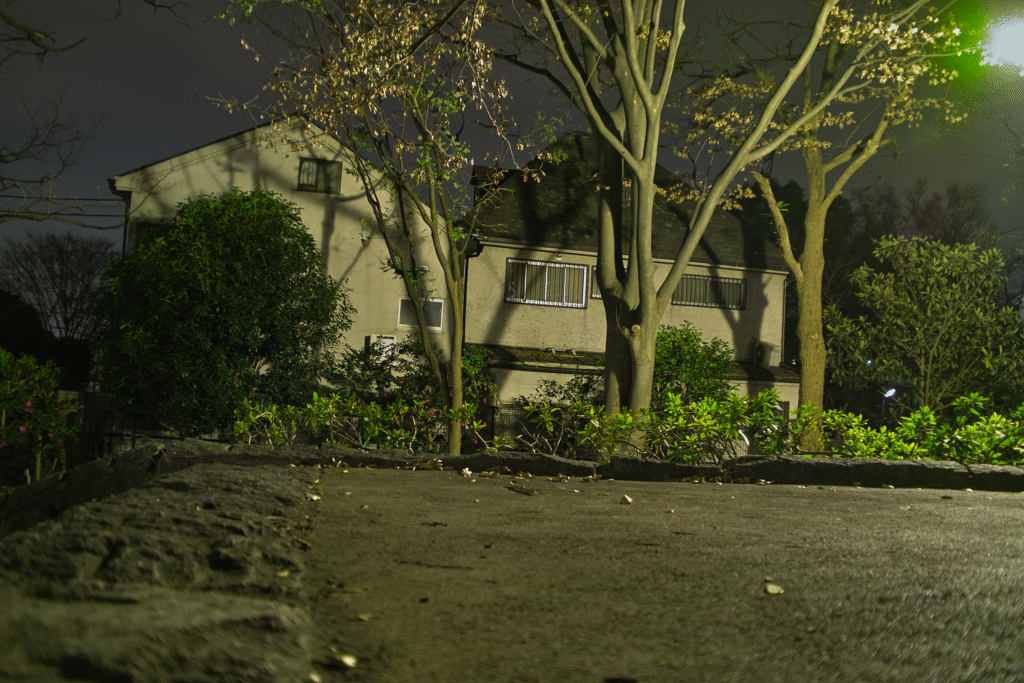
The Miyazawa family, consisting of father Mikio (44), wife Yasuko (41), daughter Niina (8) and son Rei (6) had lived in the Kamisoshigaya region of Setagaya since 1991. However, as time went on, the once bustling residential area was increasingly depleted of neighbors by the end of the year 2000. Many had sold their houses and land to the Metropolitan Government of Tokyo, which intended to expand Soshigaya Park, which was nearby.
The area was also becoming known for being popular among young skaters. While not necessarily troublemakers, it is thought that some people — including Mikio — resented the noise of nearby skating. Thanks to these various causes, the family was resolved to move away in the near future. Tragically, salaryman Mikio, his wife Yasuko, and their children would never get the chance to live in a new part of the city.
Night of the Murders
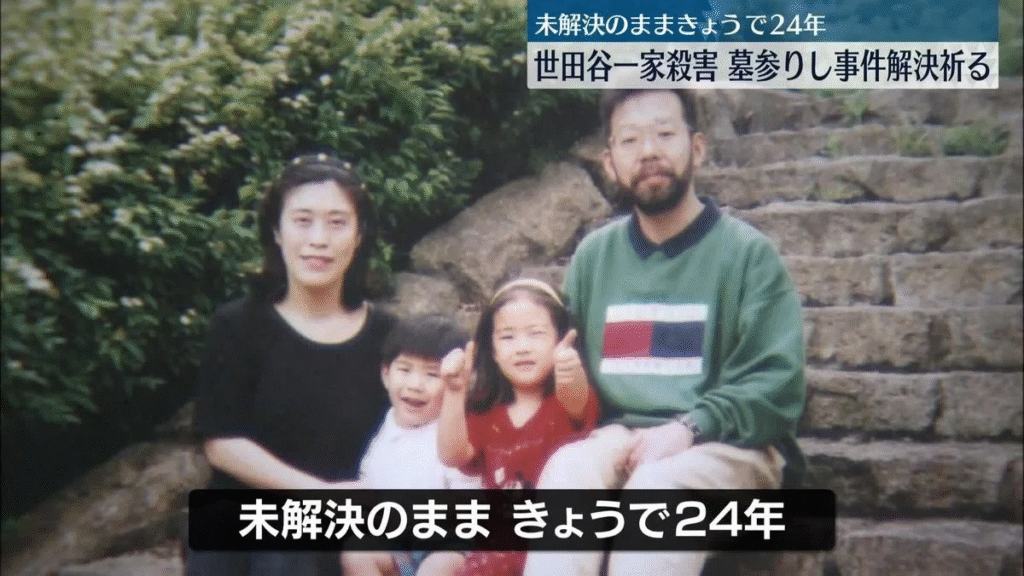
On the night of December 30, 2000, the last person to see anyone in the family alive was Yasuko’s mother, who lived next door, when Niina came by to visit and watch TV. The last known activity definitively known to have been performed by a member of the family was when Mikio logged into a password-protected e-mail at 10:38pm. After this, the sequence of events has been decided by the work of detectives.
Rei Miyazawa
Sometime after 10:38pm, investigators believe that a man climbed to the second floor of the home, where he entered through the bathroom window. It is believed that he moved first to Rei’s bedroom, next door, where he strangled the child — the only member of the family to be killed in this manner.
Mikio Miyazawa
The next victim is believed to be Mikio. His body was discovered at the foot of the stairs, with evidence suggesting that, perhaps altered by some sound, he went up to the second floor before being stabbed to death by the perpetrator, then falling down the stairs. He suffered multiple defensive wounds, and had a piece of a sashimi knife broken off in his head when his body was discovered. It is for this reason, after the killer’s initial weapon was broken, that he took a kitchen knife from the home.
Yasuko and Niina Miyazawa
Yasuko and Niina, who were sleeping upstairs in an attic, were killed and their bodies found on the second floor. Injuries to Yasuko and Niina suggest that he initially attempted to attack with the broken sashimi knife, before heading downstairs to grab the kitchen knife. Some believe that, during this period, Yasuko and Niina descended in an attempt to escape, but were not fast enough.
There is evidence that Niina had been injured previously, as a bloodied tissue covered in Niina’s blood suggests that Yasuko was trying to staunch her daughter’s bleeding. Investigators noted that these two, in particular, seemed to be attacked more violently, and even suffered attacks even after death.
Discovery and Investigation
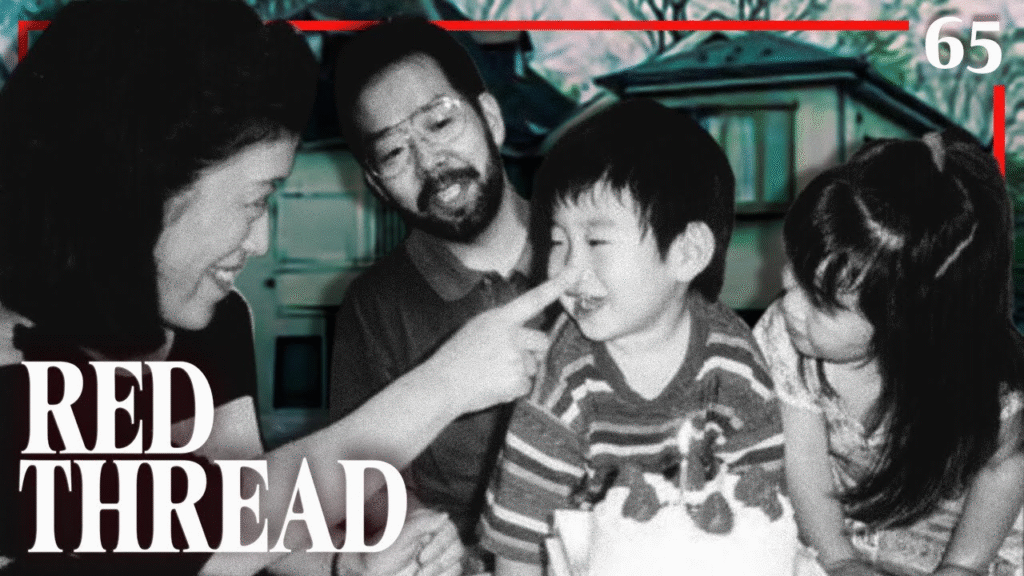
Every morning, Yasuko’s mother would call the family, but was surprised on the morning of the 31st that not only was there no answer, but also that the phone call wouldn’t connect at all. Concerned, she went next door, where she was confronted with the violent scene. She called the police, who arrived quickly, sealing off the scene, and beginning the investigation.
Following their arrival, the police found over 10,000 pieces of evidence, which — in normal circumstances — would be enough to close the case fairly quickly. However, as we know, this hasn’t been the case, and despite two decades of investigation and over 280,000 members of the police service having been involved in the case at one point or another, we seem to be no closer to being able to solve the case than a quarter of a century ago. So, what were the findings?
Findings
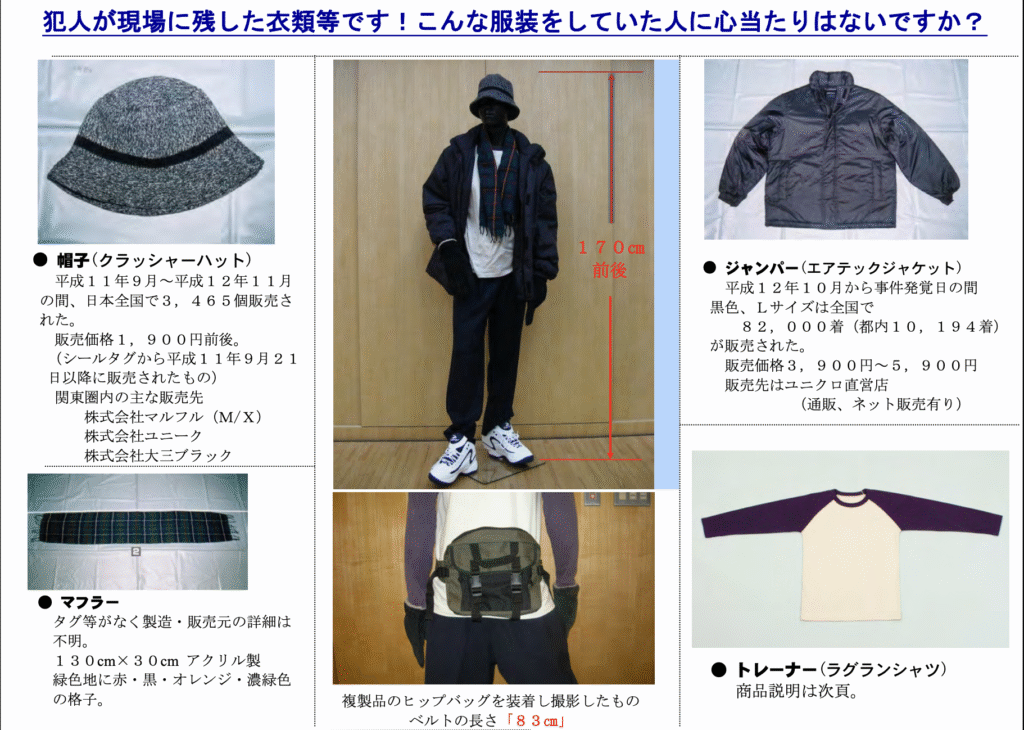
There are a number of fascinating details that, as mentioned, will make you think on first read that this case should be easy to solve, given the huge amounts of evidence found. The killer’s movements within the house also seem to be well understood — at least, the actions themselves are, though the motives behind their actions (even besides the murders) seem bizarre. So let’s go through them.
Biological Evidence
The first thing to note is that the killer himself was injured during his attack, and seemingly quite badly. He lost a lot of blood, and used not only bandages from the family’s first aid box, but also used Yasuko’s sanitary pads to try and stop the loss of blood. From this blood, it was concluded that the killer was a man, with blood type A. Years later, as DNA testing improved, it was thought that the killer would be of half western (likely Mediterranean) and half Asian descent.
He also left his fingerprints everywhere. Part of the reason that it is believed that Rei was the first killed (in addition to the method being different) is that his fingerprints were all over the room, but there was no blood. He also left saliva on ice cream cups and a glass, which we will get into in a touch more detail below.
Finally, and most unusually, following the murder, he used the bathroom and evacuated his bowels, which he did not flush. From this, detectives were able to determine that he had previously eaten string beans and sesame seeds, foods both cheap and easy to make in Japan, and loved among younger people.
Physical Evidence
Here, we have a further abundance of evidence. One thing that is highly unusual about this case is that the killer left all or nearly all of his clothing at the scene, having taken some of Mikio’s clothes, likely as the blood on his clothes would make a casual escape impossible, even late at night.
Among these clothes and other items were his shoes, a scarf, hat, sweatshirt, and fannypack. Though the source of the scarf couldn’t be determined, the sweatshirt was known to be produced and sold in Japan. Of the roughly 130 known to have been sold at the time, 12 people have come forward as buyers, all of whom have alibis.
The shoes were of interest to the police, as while the brand — Slazenger — was very popular in Japan at the time, the size of the shoe was only available in South Korea. Additionally, the fanny pack, while highly popular in Japan, was also produced in South Korea. Most notably, the fanny pack contained grains of sand that were traced to the United States.
It was agreed that the outfit altogether was one of a “skater kid” aesthetic, and matched with a person caught on security cameras in and around the area in the days leading up to the slayings.
Post-Murder Activities
After committing the murders, the killer remained in the house for an abnormal amount of time. Typically, one would expect a killer to want to flee the scene as quickly as possible, but the killer remained for at least a few more hours. While tending to his wounds and changing clothes might be expected, he also (as mentioned) helped himself to ice cream, barley tea, and a melon, which he usually ate without utensils.
He also rummaged through the family’s documents from their storage room, dumping many of them, as well as the contents of Mikio’s wallet and Yasuko’s purse, into the bathtub. However, nothing appears to have been stolen from the house. Additionally, he logged into the family’s computer and browsed the Internet (including a theater website that had been bookmarked by Mikio) at 1:18am, the last time that we can be sure he was in the house.
The Internet was connected to again at 10am on the 31st, leading many people to believe he fled shortly after this, and just before Yasuko’s mother came to check on the family. However, this would have been incredibly tight, and it has been since concluded that the computer accidentally logged in after Yasuko’s mother knocked over the mouse in shock at the scene.
Why Couldn’t the Case be Solved?

This is an abundance of evidence that would leave many detectives in other countries envious. So how could it be that, 25 years laters, no charges have been filed?
Biological Evidence
While the killer’s blood profile excludes a number of people from suspicion, there is not enough of a profile to be certain beyond generalities about the killer’s background and blood type. Additionally, despite sustaining an injury that led to serious blood loss, local hospitals had no admittances that evening or the next morning. While someone was treated in Tobu-Nikko Station, approximately three hours away for a serious hand wound (that even saw exposed bone), police dismissed the person as not matching their profile.
The killer’s fingerprints, too, did not match any on the Japan police’s database, nor have they been matched to anyone’s since, indicating that this is the perpetrator’s first and only crime that we know of. With some international physical evidence, such as the Korean shoes and American sand, one might expect to match fingerprints that are taken for all non-citizens entering Japan, if he was a foreigner. However, this policy was begun in 2001, a year later, and anyone under the age of 16 is exempt.
Physical Evidence
It is actually the physical evidence that throws up some of the most bizarre questions. The sand in particular is not just traced to the US, but to California, and, specifically Edwards Air Force Base. Many pilots stationed in Japan are trained at this base, and some suggest that the blood-stained footsteps in the house suggest a military-like movement to their gait. However, the small size of the person who wore the clothes, along with the lithe form needed to enter through the bathroom window suggest that they are not an adult.
That is, if they did enter through the bathroom window. Although the mosquito guard was broken off and the window opened, with broken twigs outside thought to be the work of the killer, no fabrics from his clothes found elsewhere on the scene were found in the bathroom. Additionally, while it is possible to enter through the bathroom window, it would be extremely difficult — and doubly so to enter without being seen or heard.
Motive
This is the one area where police have come up completely short. No clear motive can be explained, and even those guessed at are conjecture with little if any supporting evidence. If the killer had intended to steal something from the house (beyond clothes to make his getaway), then why was nothing missing? Discovered criminals also tend to flee the scene when discovered, not spend time and energy killing everyone in it.
The unusual step of putting documents and wallet contents in the bath might suggest that there was a certain something that the murderer was looking for, but again, no documents were discovered to be missing.
Some have suggested that, given the killer’s skater outfit, he might have been a youngster who was vexed at Mikio coming outside to tell the kids to keep the noise down. However, while Mikio is known to have spoken to skaters near their home about them being noisy, nobody has suggested that he was aggressive or loud, and was respectful. Still others speculate that the skater clothes left behind may be to frame someone in the group.
Of course, there is the possibility that the killer was someone who, for whatever reason, became fixated on killing the family. People note in particular that the women were subjected to especially fierce attacks, and some people reported seeing a mysterious stranger who, a few days prior to the killings, seemed to be examining the house.
Other motives have been suggested, such as Yakuza revenge for some unknown slight, but have been dismissed as outlandish, as neither Mikio nor Yasuko had any debts or similar problems that could lead to this assumption.
Societal Outcomes
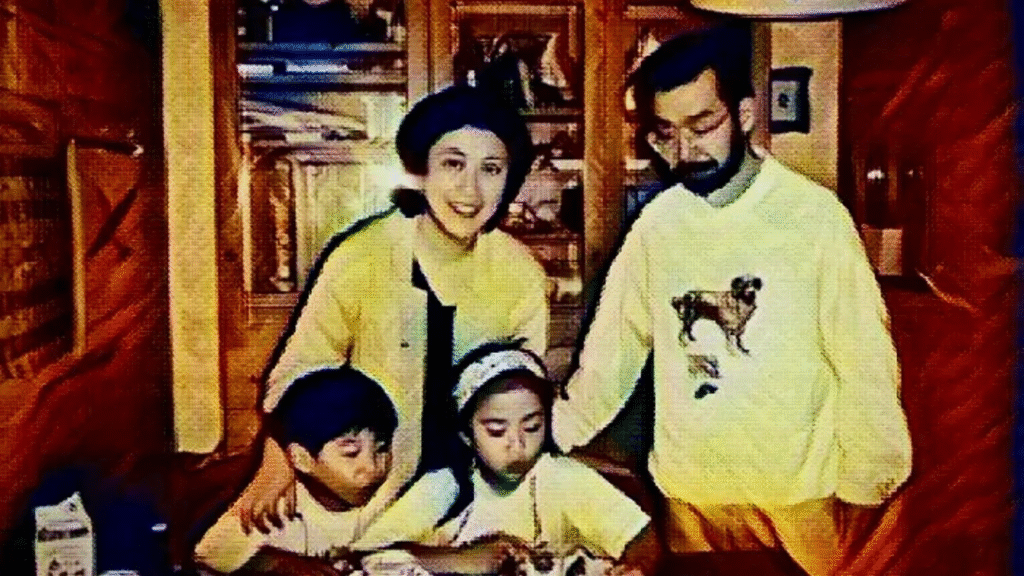
The case shocked Japan, and investigations are still ongoing, even today, despite the trail having gone cold almost as soon as it was discovered. Even today, there is a ¥20 million reward for anyone with information that leads to the arrest of the killer.
Perhaps the most significant outcome of the case to society, however, was that its gruesome nature and the fact that the perpetrator has still not been brought to justice made it a key argument for abolishing Japan’s statute of limitations on murder. Until the change in 2010, if a murderer evaded capture for 15 (or sometimes 25) years, then they could not be charged for their crime, even if they confessed.
The Setagaya Family Murders gave huge impetus for this change, as otherwise even at the outside, the killer would be able to brag freely about his horrific crimes in just two months, as of the time of writing.
This case remains one that haunts Tokyo and Japan. Even now, posters of a mock-up of the faceless killer can still be seen outside police boxes and on message boards scattered through Tokyo.
Although the Tokyo Metropolitan Police Department remains confident that the crime can be solved, each day the trail gets that little bit colder, and the Miyazawa family’s hopes for justice that little more distant.
If you have any information that could aid in the resolution of this case, please contact:
Tokyo Metropolitan Police Department, Seijo Police Station
Special Investigative Task Force for Robbery and Quadruple Murder of a Family in Kami-soshigaya 3-chome
Telephone Number:03-3482-0110 (Seijo Police Station Switchboard)
Email: so1-seijousyo-sousahonbu@keishicho.tokyo.jp

